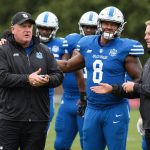Mastering Throttle Response: Tips for Enhancing Fuel Efficiency During Urban Riding in the UK
Understanding Throttle Response
Throttle response is a critical aspect of vehicle performance, particularly when it comes to fuel efficiency. It refers to how quickly an engine responds to the input from the accelerator pedal. In urban riding, where frequent stops and starts are common, managing throttle response can significantly impact your fuel consumption and overall driving experience.
For instance, a rapid throttle response can enhance the driving experience by providing immediate power delivery, but it can also lead to more aggressive driving, which may increase fuel consumption. On the other hand, a more gradual throttle response encourages smoother acceleration, promoting better fuel economy. This balance is crucial in cities like London, where traffic congestion and stop-and-go conditions prevail.
Additional reading : Maximizing Tire Traction for Sport Bikes on the UK”s Challenging Wet Roads: Essential Tips for Riders
Techniques to Master Throttle Response
Mastering throttle control techniques is essential for optimizing fuel use and improving the overall driving experience. Here are some key techniques to help you achieve this:
Smooth Acceleration
Smooth acceleration is key to effective throttle response management. By gently pressing the accelerator pedal, you avoid sudden bursts of speed that lead to increased fuel consumption. This approach not only conserves fuel but also reduces wear on the vehicle’s engine and transmission. Gradual acceleration is especially beneficial in urban settings where frequent stops and starts are common.
Also read : Ultimate Guide to Selecting and Installing Aftermarket Frame Sliders for UK Sport Bikes
For example, when driving a bike like the Husqvarna Norden 901, which is designed for both on-road and off-road capabilities, smooth acceleration helps in maintaining a consistent speed and reducing fuel consumption. This bike, with its 899 cc engine, is optimized for low fuel consumption, making it an excellent choice for urban riding.
Anticipating Traffic
Anticipating traffic conditions is another vital technique. Maintaining a safe following distance allows you to predict traffic flow and adjust your speed accordingly, reducing the need for abrupt stops and starts. This foresight helps in conserving fuel and maintaining a smoother driving experience. Anticipating traffic also enhances safety by providing ample time to react to sudden changes on the road.
In the UK, where urban areas are characterized by narrow roads and frequent roundabouts, anticipating traffic is crucial. By being aware of the road conditions and traffic patterns, you can adjust your speed and throttle response to optimize fuel efficiency and safety.
Using Cruise Control Effectively
Using cruise control effectively can aid in maintaining a consistent speed, thus optimizing fuel efficiency. However, it is crucial to use cruise control judiciously, particularly in less congested areas where speed can be maintained without frequent interruptions.
For instance, if you are driving a car equipped with cruise control, such as the INEOS Grenadier, using this feature on highways or long stretches of road can help maintain a steady speed, reducing unnecessary acceleration and deceleration. This approach allows the engine to operate more efficiently, leading to better fuel economy.
Practical Tips for Urban Riders in the UK
Navigating urban riding in the UK requires specific strategies to maximize fuel efficiency and adapt to local driving conditions. Here are some practical tips to help you enhance your riding experience:
UK Driving Conditions
UK urban areas are known for their narrow roads and frequent roundabouts, which demand careful maneuvering. To enhance fuel efficiency, adopt a driving style that includes gentle acceleration and deceleration. This reduces the need for abrupt speed changes, conserving fuel.
For example, in London, where congestion charges are in place, being aware of these charges can influence your driving routes and habits. Avoiding congested areas and taking the most direct or efficient route can help you save fuel by reducing the time spent in traffic.
Understanding Local Traffic Laws
Familiarizing yourself with local traffic laws is crucial. In the UK, adhering to speed limits not only ensures safety but also optimizes fuel use. Driving within speed limits allows for more consistent speed, reducing unnecessary fuel consumption.
Here is a detailed list of tips to help you master throttle response and enhance fuel efficiency in urban riding:
- Smooth Acceleration: Avoid sudden bursts of speed by gently pressing the accelerator pedal.
- Anticipate Traffic: Maintain a safe following distance to predict traffic flow and adjust your speed accordingly.
- Use Cruise Control Judiciously: Use cruise control on highways or long stretches of road to maintain a consistent speed.
- Proper Tire Inflation: Ensure your tires are properly inflated to reduce rolling resistance and improve fuel efficiency.
- Avoid Excessive Idling: Turn off the engine if you will be stopped for more than a minute to avoid unnecessary fuel consumption.
- Plan Your Routes: Avoid congested areas and take the most direct or efficient route to reduce time spent in traffic.
- Use the Correct Fuel: Use the recommended fuel type for your vehicle to ensure optimal performance and fuel efficiency.
Additional Tips for Enhanced Fuel Efficiency
In addition to mastering throttle response, several other factors can significantly impact your fuel efficiency during urban riding.
Maintaining a Steady Speed
Fluctuating speed is another common factor that hurts fuel efficiency. Whether you’re driving on highways or city streets, maintaining a steady speed can significantly improve your vehicle’s fuel consumption. Rapid changes in speed force your engine to work harder than it needs to, burning more fuel in the process.
For example, using cruise control on a Range Rover, especially on highways, can help maintain a consistent speed, which leads to better fuel economy. This approach prevents unnecessary acceleration and deceleration, allowing the engine to operate more efficiently.
Properly Inflated Tires
Underinflated tires are a common culprit behind reduced fuel efficiency. When your tires don’t have enough air, they create more rolling resistance, meaning your engine has to work harder to keep the vehicle moving. Checking your tire pressure regularly and ensuring that it meets the manufacturer’s specifications can help you avoid this problem.
Here is a comparison table highlighting the impact of properly inflated tires on fuel efficiency:
| Tire Pressure | Fuel Efficiency Impact | Additional Benefits |
|---|---|---|
| Underinflated | Reduced fuel efficiency | Increased wear on tires |
| Properly Inflated | Improved fuel efficiency | Enhanced safety, extended tire life |
| Overinflated | Potential for reduced traction | Risk of tire damage |
Avoiding Excessive Weight
Carrying additional weight can reduce fuel efficiency even further. Unnecessary items, such as gear or cargo that you don’t need for a specific trip, can add extra weight and reduce your vehicle’s performance. By keeping the vehicle as light as possible, especially when not off-roading or hauling, you can improve fuel economy.
Real-World Examples and Anecdotes
To illustrate the practical application of these tips, let’s consider a real-world scenario. Imagine you are a daily commuter in London, driving a car like the INEOS Grenadier. Here’s how you might apply these techniques:
- Smooth Acceleration: When driving through the city, you notice that sudden accelerations not only waste fuel but also make your ride less comfortable. By gradually increasing your speed, you find that your fuel consumption decreases, and your driving experience becomes smoother.
- Anticipating Traffic: You use traffic apps to anticipate congestion and plan your route accordingly. This helps you avoid frequent stops and starts, which in turn reduces your fuel consumption.
- Using Cruise Control: On the highways, you use cruise control to maintain a steady speed, which helps in optimizing fuel efficiency.
Mastering throttle response is a key component of enhancing fuel efficiency during urban riding in the UK. By adopting smooth acceleration, anticipating traffic conditions, and using cruise control effectively, you can significantly improve your fuel economy. Additionally, maintaining properly inflated tires, avoiding excessive weight, and planning your routes efficiently all contribute to a more fuel-efficient and enjoyable driving experience.
As a rider, understanding these techniques and applying them in your daily driving can make a substantial difference in your fuel consumption and overall satisfaction with your vehicle. Whether you are driving a car or riding a bike, these tips are universal and can help you navigate urban environments with greater efficiency and comfort.
Final Tips and Recommendations
Here are some final tips and recommendations to help you further enhance your fuel efficiency:
- Regular Maintenance: Regularly check and maintain your vehicle’s engine, transmission, and other components to ensure they are in good working condition.
- Eco Mode: Use the eco mode available in many modern vehicles to optimize fuel efficiency. This mode adjusts various parameters such as power output and throttle response to minimize fuel consumption.
- Trail Braking: Avoid hard braking by using trail braking techniques, which involve gradually reducing speed before coming to a stop. This reduces wear on the braking system and conserves fuel.
- Power Delivery: Understand the power delivery characteristics of your vehicle. For example, if you have a manual transmission, use the correct gear for the speed you are traveling to optimize power delivery and fuel efficiency.
By mastering these techniques and tips, you can significantly enhance your fuel efficiency, improve your driving experience, and contribute to a more sustainable environment. Whether you are driving a Range Rover or riding a Husqvarna Norden 901, the principles remain the same: smooth acceleration, anticipation, and efficient use of vehicle features all play a crucial role in optimizing fuel efficiency.











